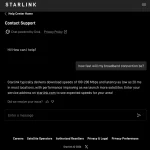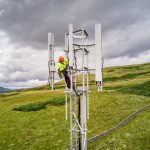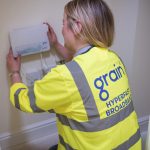Ofcom Probe EE and Vodafone for Rural UK Mobile Coverage Errors UPDATE
The national telecoms regulator, Ofcom, has today launched a new investigation that aims to establish whether or not EE and Vodafone provided “accurate information” in response to their requests for 3G and 4G mobile coverage predictions across the United Kingdom.
Sections 135 and 136 of the Communications Act 2003 reflects a general requirement for operators to “provide [Ofcom] with all such information as they consider necessary for the purpose of carrying out their functions.” Most importantly this data must be accurate, not least because the regulator will use it to help inform their policy work and to develop other features / reports etc. (e.g. coverage maps).
In keeping with that Ofcom has now opened two separate investigations into mobile operators Vodafone (here) and EE (here), which are based around an almost identical problem. In the case of Vodafone the regulator requested 4G (LTE) mobile coverage predictions across the UK, while in the case of EE they requested the same for their older 3G network.
Advertisement
However, the regulator claims to have identified “errors“, which feature in both the 4G coverage data for Vodafone’s 800MHz spectrum band and the 3G data for EE’s 2100MHz band. In the former Ofcom said that those errors meant Vodafone’s 4G coverage was “under-predicted, particularly in rural areas” and for EE’s 3G band it said the opposite, that coverage was “over-predicted, particularly in rural areas.”
At this stage we don’t know what those errors were or how significant they are, which is partly what Ofcom are trying to establish. The regulator will now conduct an evidence gathering phase until the end of December 2018, which means that we probably won’t learn the outcome of this until sometime around the spring of 2019.
Admittedly the expectation of being able to “accurately” gauge mobile coverage has always been a bit flaky, not least due to the high variability of the mobile environment where conditions (weather, obstacles etc.), devices and end-user positions are subject to almost constant motion or change.
Nevertheless Ofcom appears to be examining potentially avoidable errors rather than general restrictions on the strength of such data, although this is based on the regulator’s own theoretical model. One caveat here is that operators may dispute Ofcom’s findings, not least because they often adjust their figures to reflect the actual signal strength that customers receive on their mobiles (Ofcom doesn’t do that).
Advertisement
UPDATE 8pm
We’ve now had comments back from both operators.
An EE Spokesperson said:
“We’ve already updated our 3G coverage map in line with feedback from Ofcom, with only minor changes to the predicted coverage levels for our 3G network in some areas. Both our 2G and 4G networks are far larger overall, and have been in more places than 3G since 2016. This means our customers would have had voice coverage in these areas and there would have only been a difference in predicted data coverage for a very small number of customers in specific areas.
We apologise for any confusion this may have caused, and we continue to work to give our customers the most accurate view of the coverage available to them so that they can make an informed decision about their choice of mobile network. This includes new ways to measure actual coverage experience, rather than predicted, such as tracking the time spent on 4G for individuals – all to help inform and continually improve our network performance across the UK.”
A Vodafone Spokesperson said:
“We report coverage data to Ofcom when requested. It appears that we may have been inadvertently under-reporting the extent of our 4G network coverage. This is because the data we have been submitting is adjusted to reflect the signal customers actually receive on their mobile phones. This is the data we use internally to assess customer coverage, whereas Ofcom reports on the theoretical strength of the signal at the location of the handset. The good news is that using Ofcom’s measurement, our geographic coverage is higher.”
Mark is a professional technology writer, IT consultant and computer engineer from Dorset (England), he also founded ISPreview in 1999 and enjoys analysing the latest telecoms and broadband developments. Find me on X (Twitter), Mastodon, Facebook, BlueSky, Threads.net and Linkedin.
« Customer Confusion Over Fate of Virgin Media’s Line Rental Saver

















































Comments are closed